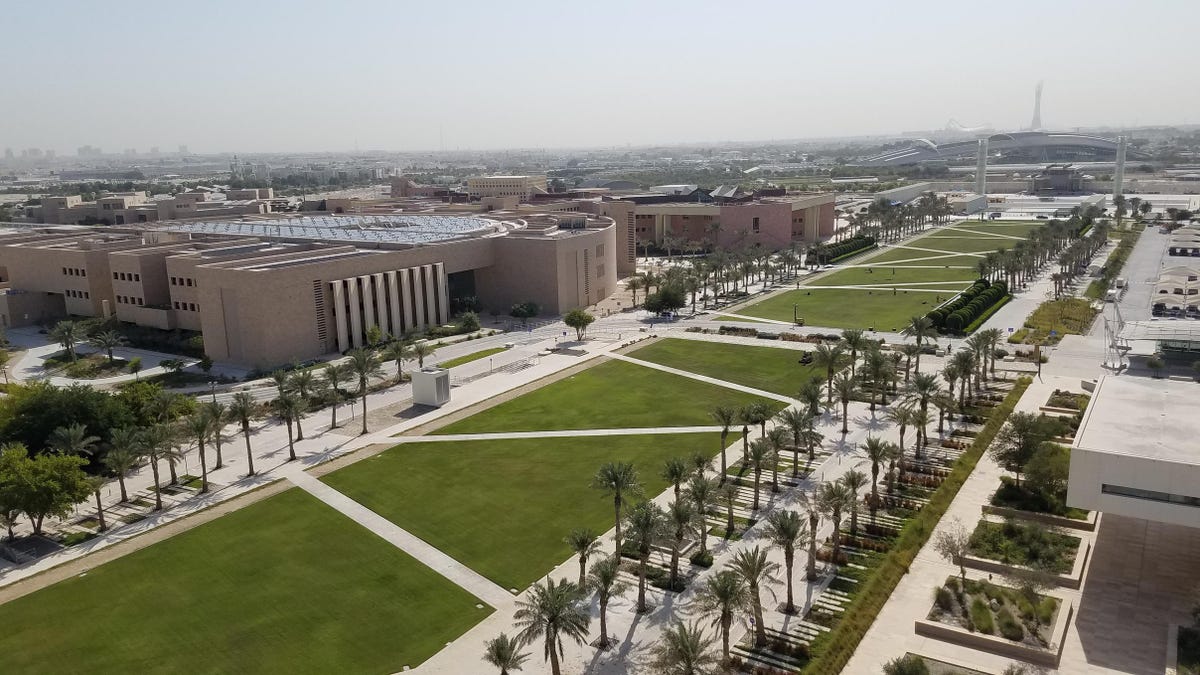
A view of Education City in Qatar.
Education is a competitive endeavor. We may argue whether it should be, and there are plenty of reasons we’d all be better off it was not. But it is.
The easiest place to see education competition is school to school, where institutions compete for reputation, funding, and students. But at a larger level, a very real and very consequential educational market exists country to country.
It’s more than a matter of national pride. The nations that invest in their colleges and universities, build the labs and incubators and libraries and hire the top teachers not only attract lucrative and stabilizing foreign students, they generate educated, rational citizens and create innovations that transform economies.
Silicon Valley, for example, would never have become Silicon Valley without Stanford and Berkeley. And that’s why some countries, China for instance, are investing so much money in trying to recreate it. Building the schools and betting on innovation to follow.
In that global education investment race, there’s a player that should be earning everyone’s attention – Qatar. The comparatively tiny country on the Arabian Peninsula is not playing around. Not only does Qatar, via its namesake Qatar Foundation, run one of the most prestigious education conferences and initiatives in the world in WISE, the foundation has also built a literal city – Education City – around education investment, innovation and infrastructure.
City isn’t a cute name to evoke grand images. It’s actually the size of a city. And having had the honor of visiting Education City recently, I can tell you it’s the kind of place that defies even the most outlandish of imaginations. It’s the kind of place you’d build if you had a blank canvas of open land and virtually unlimited resources. Education City is the audacious and ambitious undertaking that we in the United States just don’t do anymore – or least have not even attempted since the days of Robber Barons or Land Grant Universities.
MORE FOR YOU
Education City has been built as an end-to-end education community with schools and programs from early childhood though PhD and advanced research. It has high-tech labs, an education innovation incubator and is already home to a healthy eight foreign universities, all sharing one interconnected and impressive campus. Of those eight, six are American – Cornell, Georgetown, Texas A&M, Virginia Commonwealth, Northwestern and Carnegie Mellon.
It has Oxford-esque landscaping designed to conjure campus greens and a luxurious air-conditioned rail-tram service connecting the City’s various hubs. Qatar’s impressive national library and convention center and one of Qatar’s World Cup soccer stadia all on campus the too. Education City is obviously designed to impress. It’s new, glimmering and technology forward.
Education City, Qatar.
That’s not meant to sound dismissive. The school I went to, for example, is very well regarded but its facilities were downright stoic and decrepit. It lacked heat. Windows were broken or leaky. The few elevators it had seldom worked. Education City is the opposite of that. It may have yet to find its reputational fanfare, but I am certain that its elevators work.
Also consider that the biggest factor may not be what Education City is but where it is. Created in western-facing and culturally open Qatar, the wealthiest county on Earth, Education City feels like a tinder box of creative and educational energy. It’s clear that’s what Qatar has bet on.
Which is why what Qatar is doing really matters. Education is the type of investment that pays off both well and over a long timeline. So, Education City isn’t just showing off – it’s bound to show up. It’s not just vanity, it’s future prosperity.
The juxtaposition with the state of higher education affairs that we know in the United States is jarring. Elsewhere, they build. They value the outcomes of education by financing its inputs. Other countries are building computer labs and libraries while we push schools to shed their “costly” physical buildings and land campuses and cut state funding for colleges, passing more and more of the cost along to the very people they’re supposed to be helping.
The saying goes that you invest in what you value. And investment – major investment – in education is happening. People are out there right now literally building better systems, better education structures by design. It’s just not necessarily happening here. Not anymore.
It is enough to make anyone wonder whether in 30 or 20 or even ten years we’re going to regret letting our higher education infrastructure crumble – both literally and figuratively. Whether distractions such as student debt and the ridiculous standards of “return on investment” have made us forget that we’re in a globally competitive environment for education. Others know it. And they are playing to win it.




